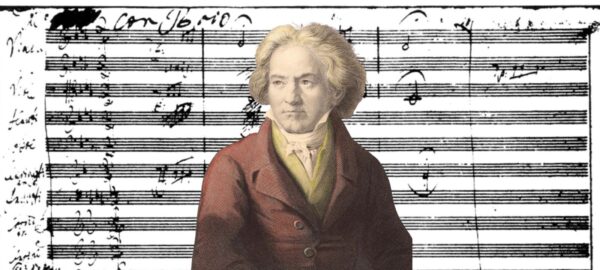
We're performing these three Beethoven pieces in 2026
December 10, 2025
Beethoven's legendary composing takes center stage in the Omaha Symphony's 2025/26 Season!Tuesday, October 13
The Omaha Symphony performs Beethoven's Symphony No. 5, Movement IV from their homes.
There is perhaps no better-known piece of classical music in the popular Zeitgeist than Beethoven’s Symphony No. 5 – everyone knows the four opening notes of the first movement, three Gs followed by a long-held E flat. This infamous theme, a driving arrival of “fate” (a nickname Beethoven once gave this theme, and one that stuck beyond his singular use) quickly establishes the key of c minor, a dark place from which the symphony fights and lifts itself from in the third and fourth movements.
Completed in 1808 and premiered in Vienna at the Theater-an-der-Wien, Beethoven’s iconic “Fifth” actually came after the symphony we know as his sixth. Though it’s the theme from the first movement that’s taken up residence in the minds of the collective, it’s the exuberance of the Symphony’s fourth movement that offers relief from its darkness. The third movement’s scherzo allows the peeking in of some light by way of the parallel key C Major, an unexpected shift when the more commonly followed key-journey would see this work end in its relative major, E flat Major. By the fourth movement, the exuberance of the parallel major emerges and is fully realized, leaving the orchestra to romp unencumbered.
And that’s what you’ll hear from the musician’s homes – the triumphant fourth movement of Beethoven’s Symphony No. 5. Though “The Fifth” remains quintessential in the western canon, the composer himself didn’t consider it his crowning achievement. When asked by a friend which symphony was his favorite, Beethoven answered, without missing a beat: “The Eroica.” It’s a good thing, then, that the Omaha Symphony is performing "Eroica" live in just a few weeks—between their virtual orchestra performance of Beethoven's fifth and upcoming live performance of his third, it's your call to make.
Beethoven Septet
2 p.m. Saturday, Oct. 18
R. STRAUSS: Till Eulenspiegel einmal anders!
CAROLINE SHAW: Boris Kerner*
GLIERE: Suite from 8 Pieces for Violin & Cello, Op. 39
ROBERT HONSTEIN: Patter*
WINSTON SCHNEIDER: The Summer of COVID-19 (from the perspective of a 17-year-old-girl)**
BEETHOVEN: Septet in E-flat minor, Op. 20
*Omaha premiere
**World premiere
All Beethoven
7:30 p.m. Thursday, Oct. 22
BEETHOVEN: Overture from Creatures of Prometheus
BEETHOVEN: Symphony No. 3 in E flat Major, Op. 55
Love the Omaha Symphony?
Be the first to learn about new concerts, stories, and special offers.